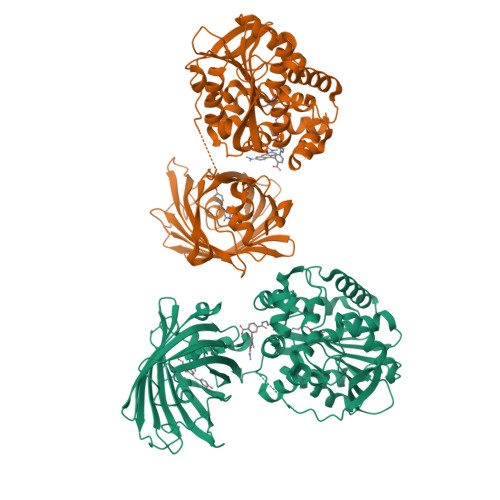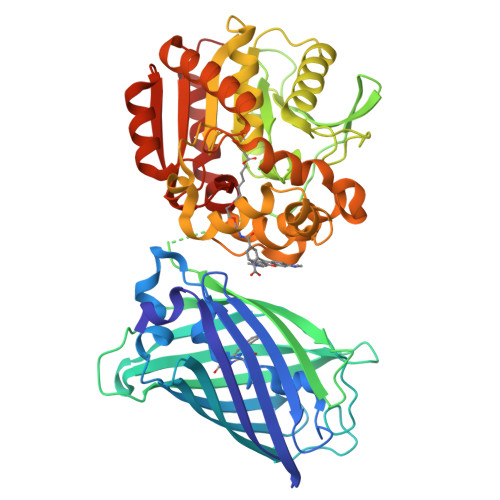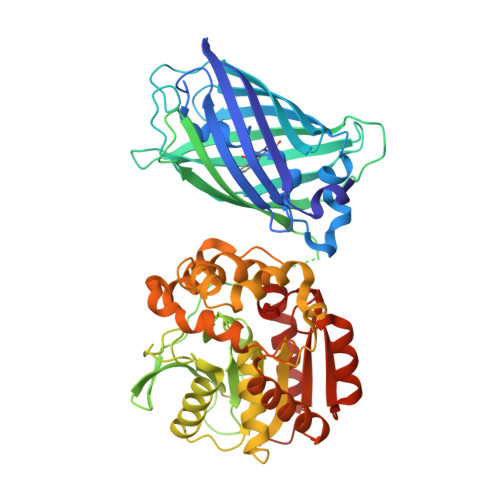A general method for the development of multicolor biosensors with large dynamic ranges.
Hellweg, L., Edenhofer, A., Barck, L., Huppertz, M.C., Frei, M.S., Tarnawski, M., Bergner, A., Koch, B., Johnsson, K., Hiblot, J.(2023) Nat Chem Biol 19: 1147-1157
- PubMed: 37291200
- DOI: https://doi.org/10.1038/s41589-023-01350-1
- Primary Citation of Related Structures:
8B6R, 8B6S, 8B6T - PubMed Abstract:
Fluorescent biosensors enable the study of cell physiology with spatiotemporal resolution; yet, most biosensors suffer from relatively low dynamic ranges. Here, we introduce a family of designed Förster resonance energy transfer (FRET) pairs with near-quantitative FRET efficiencies based on the reversible interaction of fluorescent proteins with a fluorescently labeled HaloTag. These FRET pairs enabled the straightforward design of biosensors for calcium, ATP and NAD + with unprecedented dynamic ranges. The color of each of these biosensors can be readily tuned by changing either the fluorescent protein or the synthetic fluorophore, which enables simultaneous monitoring of free NAD + in different subcellular compartments following genotoxic stress. Minimal modifications of these biosensors furthermore allow their readout to be switched to fluorescence intensity, fluorescence lifetime or bioluminescence. These FRET pairs thus establish a new concept for the development of highly sensitive and tunable biosensors.
Organizational Affiliation:
Department of Chemical Biology, Max Planck Institute for Medical Research, Heidelberg, Germany.






















